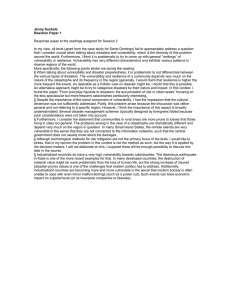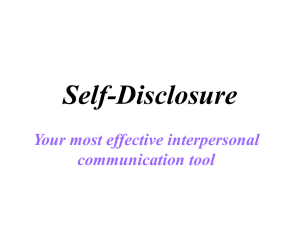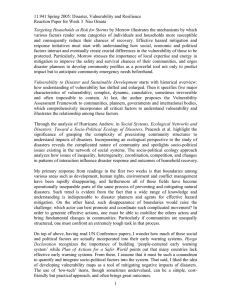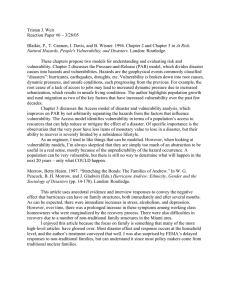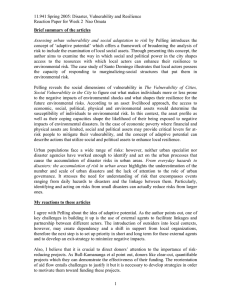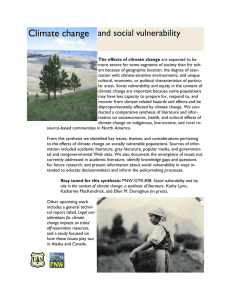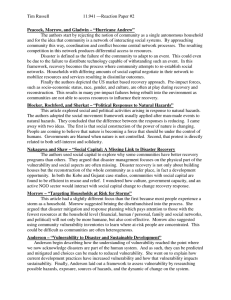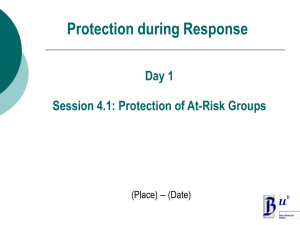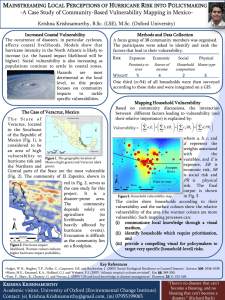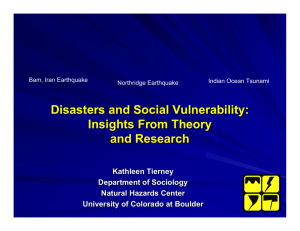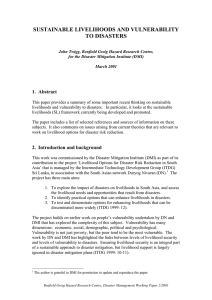Tristan J. Weir Reaction Paper #2
advertisement
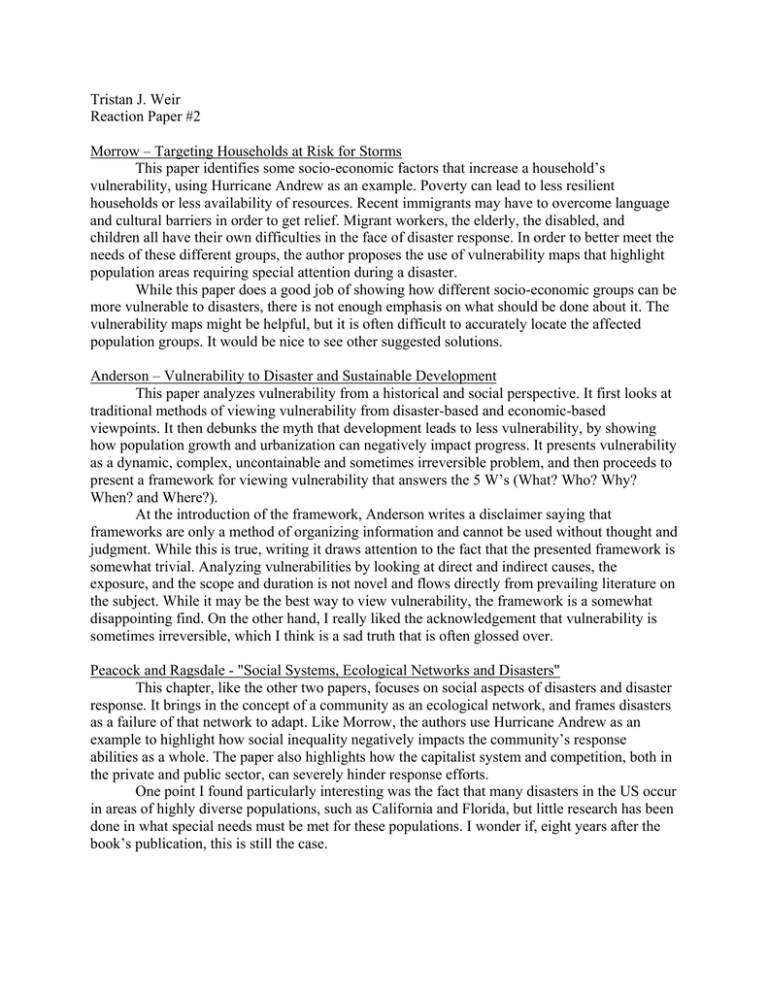
Tristan J. Weir Reaction Paper #2 Morrow – Targeting Households at Risk for Storms This paper identifies some socio-economic factors that increase a household’s vulnerability, using Hurricane Andrew as an example. Poverty can lead to less resilient households or less availability of resources. Recent immigrants may have to overcome language and cultural barriers in order to get relief. Migrant workers, the elderly, the disabled, and children all have their own difficulties in the face of disaster response. In order to better meet the needs of these different groups, the author proposes the use of vulnerability maps that highlight population areas requiring special attention during a disaster. While this paper does a good job of showing how different socio-economic groups can be more vulnerable to disasters, there is not enough emphasis on what should be done about it. The vulnerability maps might be helpful, but it is often difficult to accurately locate the affected population groups. It would be nice to see other suggested solutions. Anderson – Vulnerability to Disaster and Sustainable Development This paper analyzes vulnerability from a historical and social perspective. It first looks at traditional methods of viewing vulnerability from disaster-based and economic-based viewpoints. It then debunks the myth that development leads to less vulnerability, by showing how population growth and urbanization can negatively impact progress. It presents vulnerability as a dynamic, complex, uncontainable and sometimes irreversible problem, and then proceeds to present a framework for viewing vulnerability that answers the 5 W’s (What? Who? Why? When? and Where?). At the introduction of the framework, Anderson writes a disclaimer saying that frameworks are only a method of organizing information and cannot be used without thought and judgment. While this is true, writing it draws attention to the fact that the presented framework is somewhat trivial. Analyzing vulnerabilities by looking at direct and indirect causes, the exposure, and the scope and duration is not novel and flows directly from prevailing literature on the subject. While it may be the best way to view vulnerability, the framework is a somewhat disappointing find. On the other hand, I really liked the acknowledgement that vulnerability is sometimes irreversible, which I think is a sad truth that is often glossed over. Peacock and Ragsdale - "Social Systems, Ecological Networks and Disasters" This chapter, like the other two papers, focuses on social aspects of disasters and disaster response. It brings in the concept of a community as an ecological network, and frames disasters as a failure of that network to adapt. Like Morrow, the authors use Hurricane Andrew as an example to highlight how social inequality negatively impacts the community’s response abilities as a whole. The paper also highlights how the capitalist system and competition, both in the private and public sector, can severely hinder response efforts. One point I found particularly interesting was the fact that many disasters in the US occur in areas of highly diverse populations, such as California and Florida, but little research has been done in what special needs must be met for these populations. I wonder if, eight years after the book’s publication, this is still the case.
